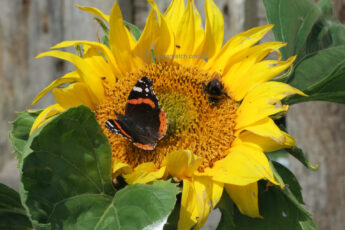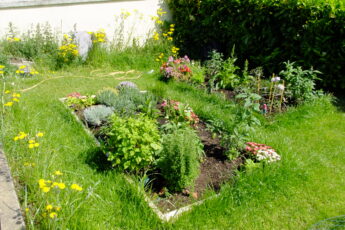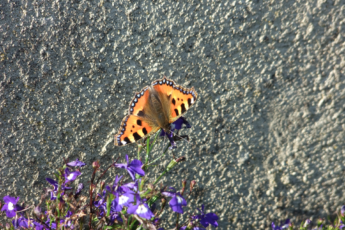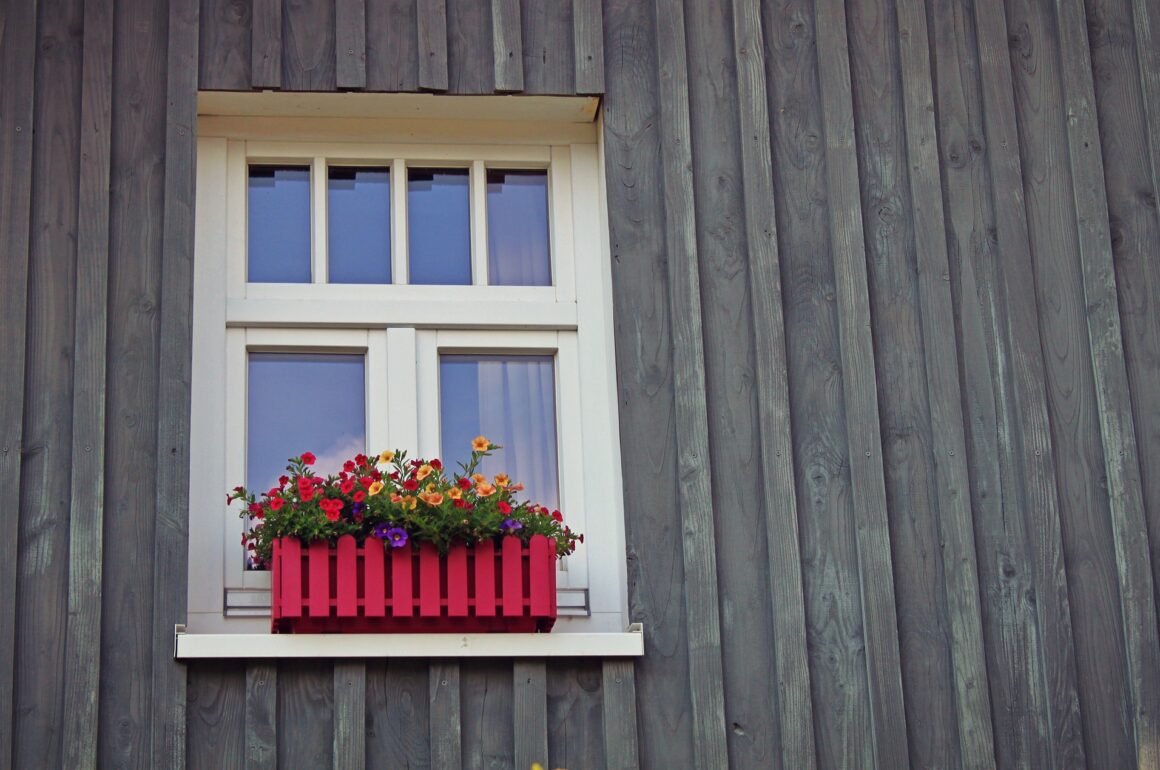
Not everyone has access to a large garden where they can sit and be at one with nature… with a lawn, trees, lots of border plants, maybe even a pond! No, a lot of us only have a small outdoor space, it could be in the form of a courtyard, a tiny patio, a small balcony in an apartment block, or maybe even no garden at all! And you might think that size matters, and that because you only have a teeny tiny space you won’t see any bees, butterflies or moths… that you won’t be much help to the pollinators. You would be wrong!
In UK and Ireland combined there are over 24 million dwellings of which the majority would have an outdoor space of some kind. If each of those dwellings dedicated a space (even just a couple of pots) for pollinator friendly plants, imagine the positive effect it would have on their declining numbers.
Plots for Pollinators
Back in 2018, Alan Titchmarsh launched a ‘Plots for Pollinators’ campaign to highlight the benefit of planting just 1 square metre of nectar-rich flowers to help the bees, moths and butterflies. It doesn’t necessarily have to be horizontal either – if all you have is a bare wall, you could set up a variety of hanging baskets, or even hang up an old pallet and turn it into a vertical garden! Watch the quick video below for a couple of ideas…
So, if you live in an apartment block with only a small balcony as your outdoor space, how can you attract pollinators?
Container gardens for balconies
Planting in containers is ideal if you live in an apartment and have a balcony. It doesn’t matter what size balcony you have as you can use a variety of different sized pots and containers and fill them with plants of varying heights.
Also, containers are great if you are renting as you can take them with you when you move to your next property 🙂
Depending on which storey you live on will determine whether you can attract pollinating insects – bees for example tend to naturally forage up to tree canopy height, so if you live above the 9th or 10th floor, the chances are you probably won’t get many, if any, bees visiting. However, there are still other pollinators that could benefit from the nectar rich plants. For example, moths (and bats if you’re lucky!) would be drawn to night-scented plants which have evolved their night-time perfume to attract them to pollinate their flowers. In garden centres, these are categorised as night-scented flowers, such as Evening Primrose, night-scented Stock and Nicotiana Alata.
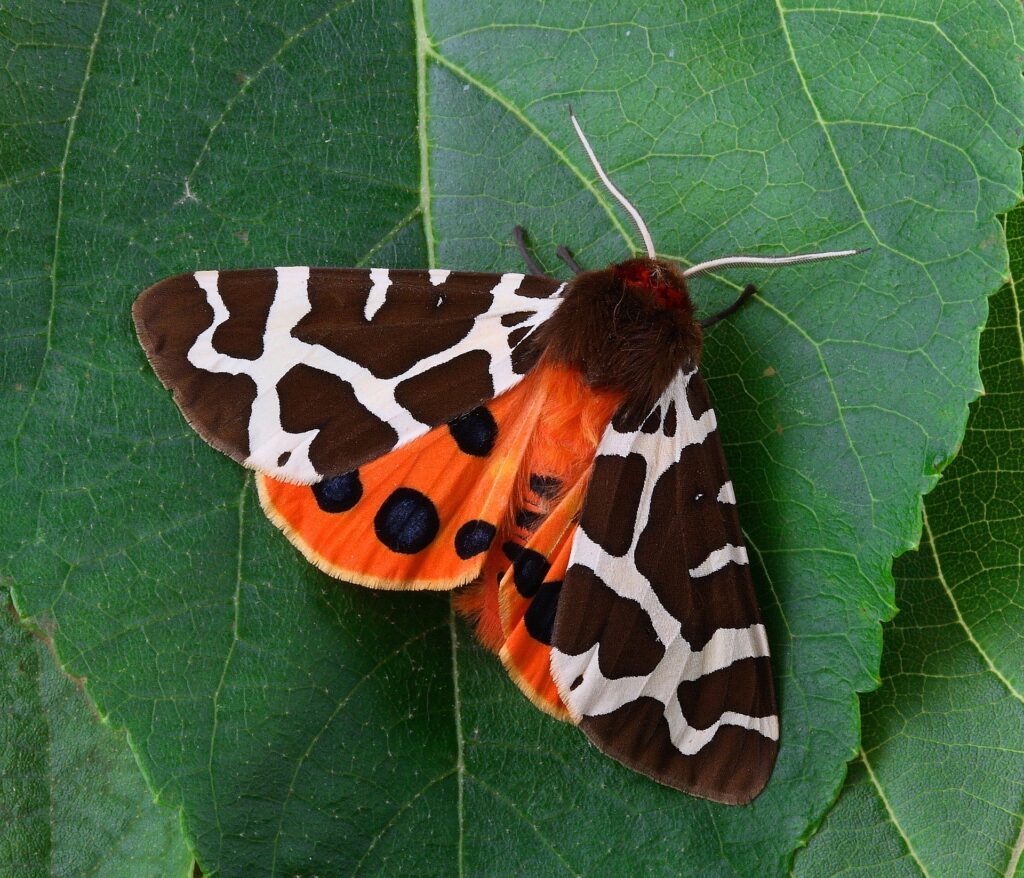
Image by Ian Lindsay from Pixabay
If you live below the 10th floor, then you can still attract bees and butterflies. Choose plants that are rich in pollen and nectar, and that do well in containers and shallow growing conditions.
Think of species that are resilient to the weather & growing conditions, for example Thrift which grows along cliff tops, and Sedums which grow wild in mountains and along the coast in the Mediterranean. Bees love both and they would grow well on a balcony in a container or window box.
Native species that grow wild on roadside verges and meadows would also look good in containers, Birds Foot Trefoil or Vetch for example are very attractive to bees.
Herbs also grow well in containers and are hardy enough to live in exposed conditions so would be great for balconies or window boxes. Use the leaves as required for cooking etc but allow the plants to flower to benefit the pollinators.
The purple-pink blooms of chives are very attractive to bees and butterflies. Also, thyme, sage and rosemary are a few more examples of herbs that pollinators like. If you want to attract butterflies, mix containers of herbs with nectar-rich flowers. Some herbs are the food source for caterpillars and so would give the butterflies a place to lay their eggs, whilst the nectar from the flowers will feed the butterflies themselves.
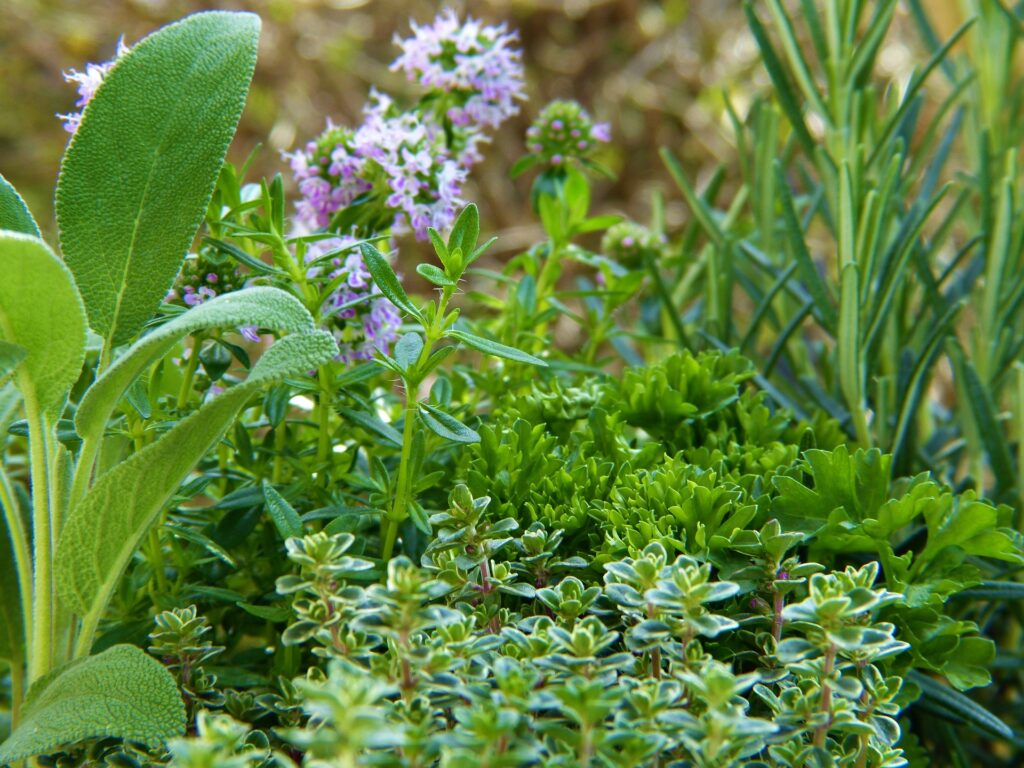
Image by silviarita from Pixabay
If you want to grow your own veg or salad, you could do that in containers too! You can have them in separate containers or mix them in with companion plants.
Try to go for a wide variety of colours and flower shapes to appeal to a variety of pollinators but stay clear of hybrid species of flowers as they tend not to produce a lot of nectar. The RHS has a recommended list of garden plants and wildflowers for pollinators which you can download here.
Vertical garden
If you have limited floor space but want something against the wall or fence, an alternative could be to put up a trellis or wooden frame and grow climbing plants that could benefit pollinators, and birds. If you don’t fancy the idea of putting up a trellis, you could also grow climbers in containers placed against a wall or trained to grow up and over a balcony railing.
Some good climbing plants for pollinators include:
- Ivy which plays an important role for late-flying pollinators as they depend on the flowers for pollen and nectar in the autumn. Their berries which ripen later in the year also feed birds when their natural food is scarce. It also provides shelter for a lot of insects, many of which use it as a winter hibernation site.
- Honeysuckle which attracts long tongued moths and birds love the berries too.
- Clematis which is a good source for bird nesting materials and attracts lots of pollinating insects.
You don’t just have to limit the trellis to climbing plants – you could hang pots or planters on it too for pollinator plants and/or herbs to add colour to your wall. Woodies have a great short DIY video to show you how to do that.
Hanging baskets
If you don’t have the space for container plants and still want to attract pollinators, you could look at fixing brackets on the wall and putting up hanging baskets. This is one way to create beautiful displays to hang off your balcony, railing or porch. You can hang a couple from the same hook or arrange them to hang at different levels to make it more interesting.
To attract the pollinators, again you just need to choose plants that are rich in nectar and pollen.
This display from Gardeners World uses single-flowered plants which are wildlife friendly and looks really good.
Keep an eye out for birds too, as some like to occasionally nest in hanging baskets!
Window boxes
Just like hanging baskets, window boxes can be a great habitat for wildlife. By planting nectar rich flowers that bloom at different times of the year, you will be helping pollinators who are around in early spring as well as those stocking up their reserves in late autumn.
You can have different ‘themed’ window boxes, for example one containing herbs, one containing wild meadow flowers. If you have a window box that doesn’t get much sun, you could try planting native woodland plants which are low-growing.
If we all planted just a couple of pots with pollinator-friendly plants we could make such a difference to these important insects, as well as brightening up our own outdoor spaces 😊

